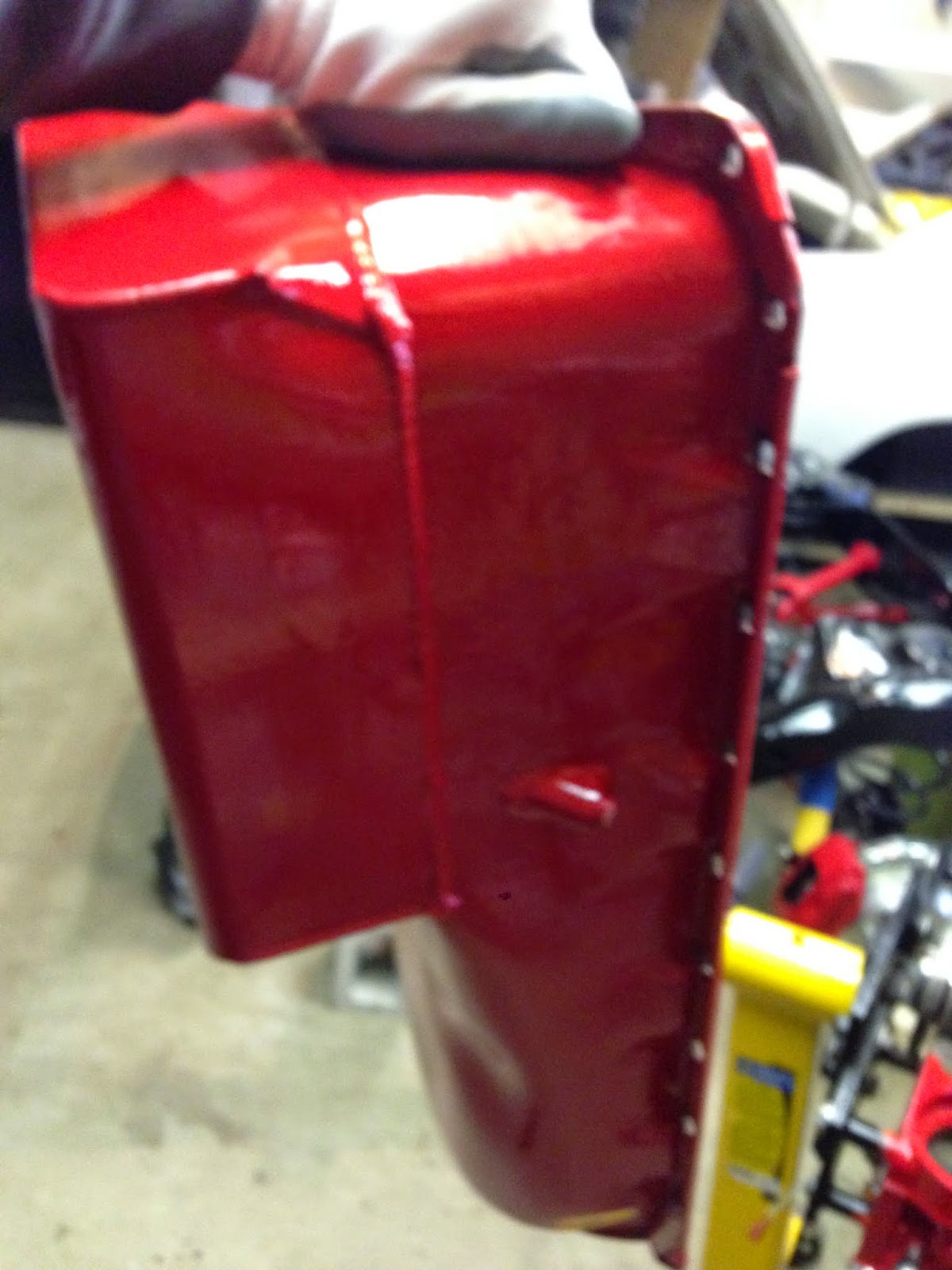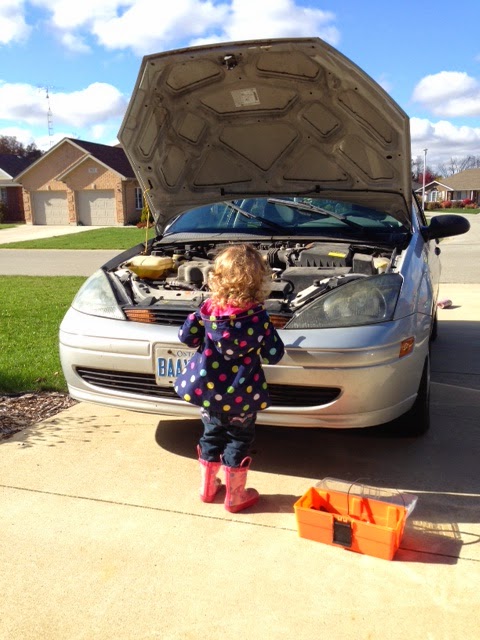I am almost coming to the end of the pre-assembly stage of my engine build, there are just a few other things to do. With both heads on the block tightened down just snug (not torgued) I installed the intake manifold with just 4 bolts to make sure it lined up on the heads ok.
I'm really glad I went with the black powdercoated version on the intake manifold. I really like the look of the black on red, and it will go well with the black on red look of my chevelle when it's done.
I then test fitted the distributor in the block and tightened it down with it's hold down clamp, because next I will be turning the engine upside down.
With the engine upside down I put the oil pump driveshaft down into it's hole in the block.
The picture below shows the oil pump driveshaft in the block. Also I installed the oil pump stud in the block.
I then tightened the oil pump onto it's stud.
The oil pump driveshaft play is then measured. To do this, using my pinky finger I slid the driveshaft as far up as it would go. I then drew a line on the oil pump, where the two met. I then pushed the driveshaft down as far as it would go and made another line.
Below are the two lines that were made on the oil pump shaft. This indicates that there is some endplay with the driveshaft, which is good.
I next installed the oil pump pickup into it's hole in the oil pump. It is a press fit and had to be tapped down into the hole using a punch.
The oil pump and pickup that came in my kit had a locating tab on the pickup that set the pickup to it's desired depth within the kit's oil pan. I will be verifying the clearance between the pan and pickup just to be sure.
The bolt in the oil pump kit is removed and then reinstalled over the pickup locating tab.
Here is the oil pan
To check the clearance between the pan and the oil pickup, I once again pulled out some modeling clay. I placed a blob on top of the pickup.
The pan was then placed onto the block, which in turn squished the clay to the clearance. I then removed the pan again and using my calipers measured the thickness of the clay. I forgot to take a picture of this, but I measured the clearance to a little bit less then 3/8" which is good.
All my engine pre-assembly checks have now been completed. I am happy with all my measurements that I have taken. I now will start to dissassemble the engine in preparation for final assembly.
















































